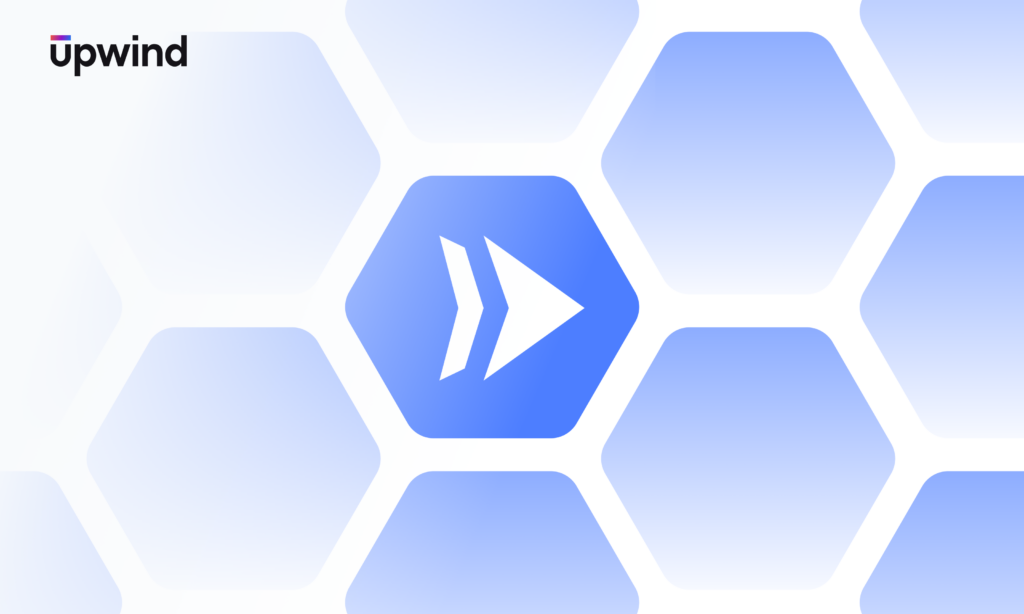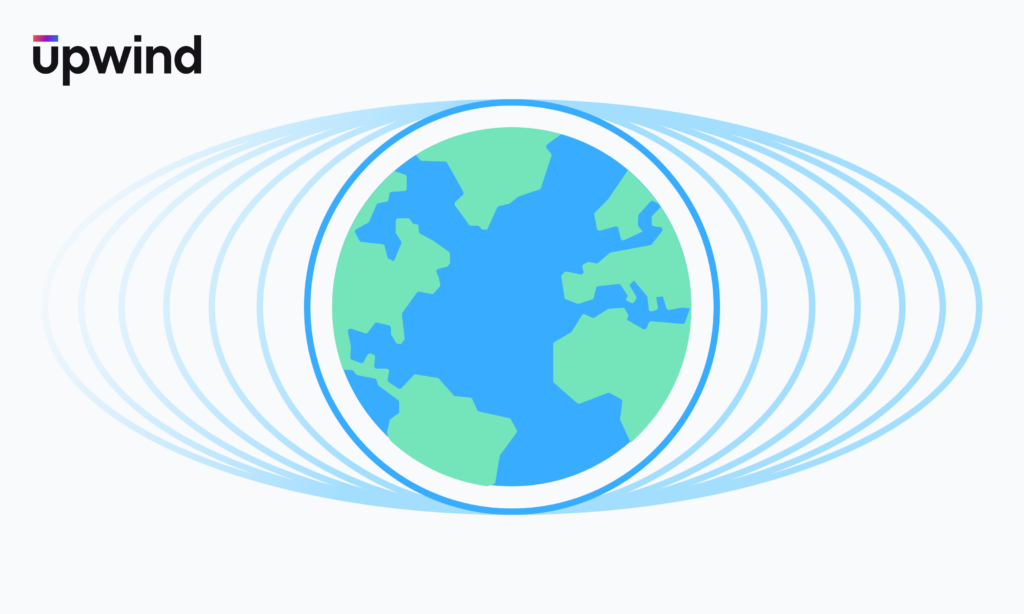
In today’s dynamic cloud landscape, security is a top priority for organizations of all sizes. As businesses migrate to the cloud, ensuring their cloud environments are secure and compliant becomes essential. Cloud Security Posture Management (CSPM) tools are critical in this process, helping organizations maintain a strong security posture while mitigating risks. In this blog post, we’ll explore top ways Upwind’s CSPM capabilities empower organizations to safeguard their cloud environments effectively.
Upwind’s CSPM Capabilities
Traditional cloud security vendors focus on static scans for inventory and discovery, resulting in noisy systems that are difficult to operationalize and lose value over time.
Upwind takes a revolutionary approach by integrating runtime context throughout the entire cloud security stack. This dramatically enhances the accuracy of security findings and brings infrastructure, application, and API context effortlessly, making your operations more efficient and secure.
Continuous Misconfiguration Monitoring
Maintaining a strong security posture and keeping up with industry regulations and best practices is crucial. Upwind’s CSPM solution continuously monitors cloud environments against established compliance frameworks, such as CIS, SOC2, GDPR, HIPAA, and PCI-DSS, providing organizations with actionable insights to address posture gaps. In addition to that, Upwind goes even further to also stay on top of industry best practices and dynamically integrates them as part of Upwind’s posture and misconfiguration monitoring with additional controls such as the Upwind Framework.
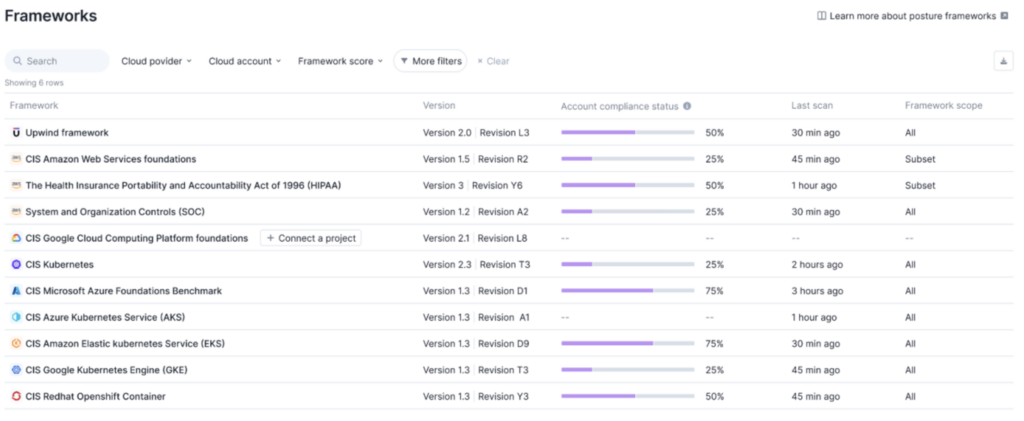
Understand Compliance Over Time
Upwind not only continually scans for compliance issues and misconfigurations, it also shows compliance over time and makes it easy to pinpoint when posture violations began. This helps organizations to understand how environmental or policy changes are impacting their overall posture, as well as to pinpoint when specific control violations occurred, on which assets.
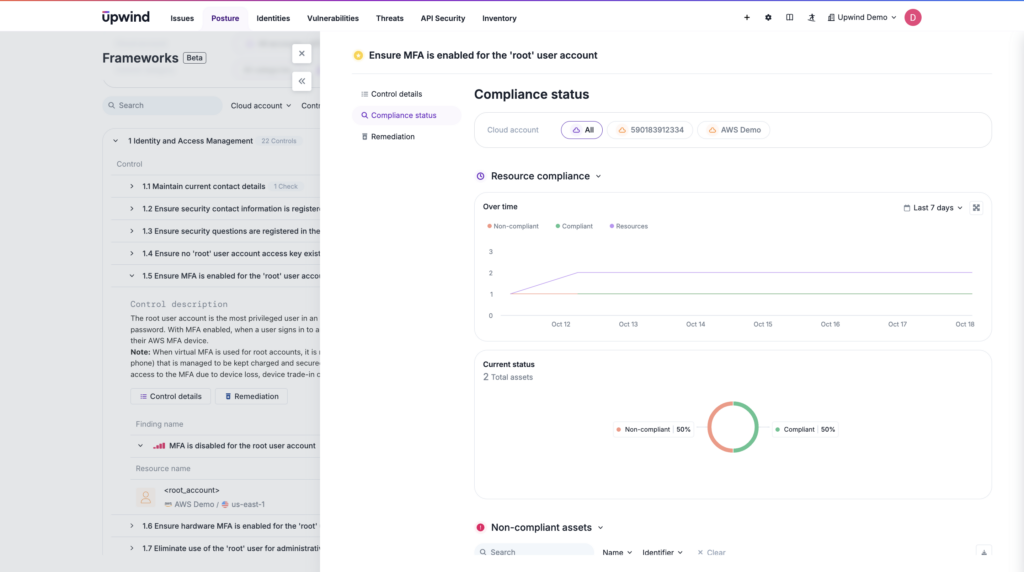
Highlight Internet-Exposed Risks
Automatically highlight where you are vulnerable and at risk due to your exposure to the Internet, including via exposed assets, open management ports, serverless functions, databases, and object storage.
Upwind’s External Exposure Dashboard enables security leaders such as CISOs, VPs of Engineering, and more to easily track their organization’s progress on securing their infrastructure, supporting data-driven decision-making, and making it easy to communicate security compliance to stakeholders.
Likewise, security teams can leverage this dashboard to easily understand their most critically exposed resources and identify internet-exposed attack paths that should be prioritized for immediate remediation.
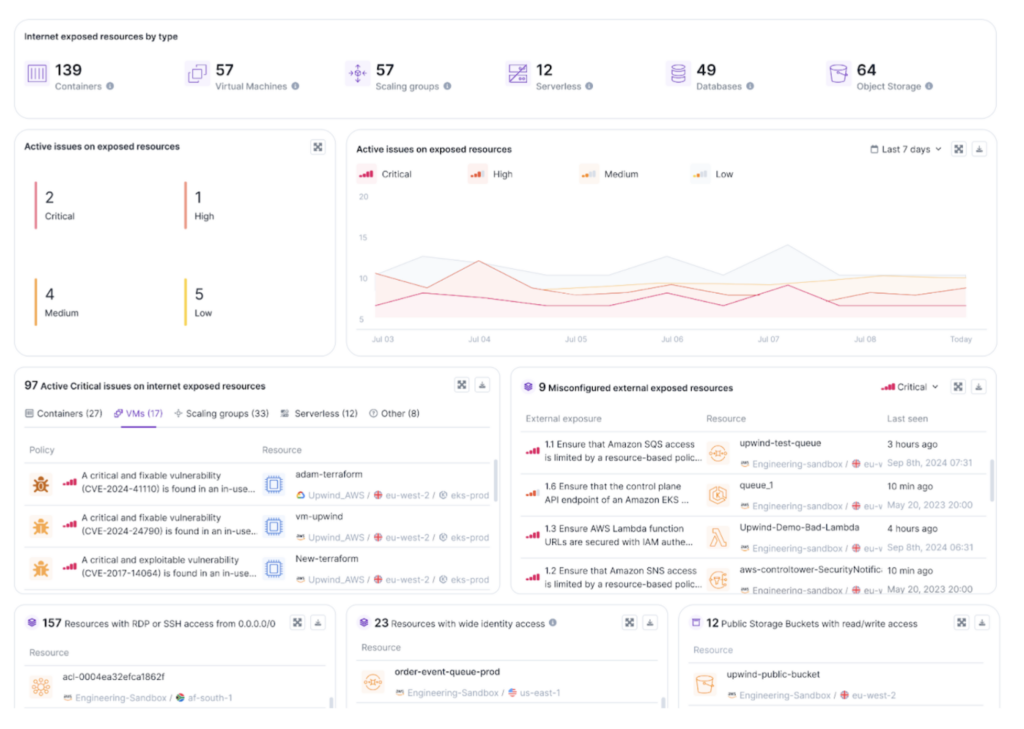
See an Orbital View of Each Resource
Upwind Orbital View is an easy, new way to visualize your most important resource information through holistic inventory mapping and dynamic network analysis, helping you rapidly understand your resources’ behavior and risks.
The Upwind Orbital View gives you the ability to easily visualize resource contexts, such as related images, storage, privilege attributes, identity roles with access, internet traffic, security groups, resource communication, compute resources, and API endpoints.
You can use the Orbital View to instantly understand the most important environmental context for each of your running resources, as well as drill down on any of the categories for additional information, such as diving into specific ingress communication including ports, protocols, and throughput.
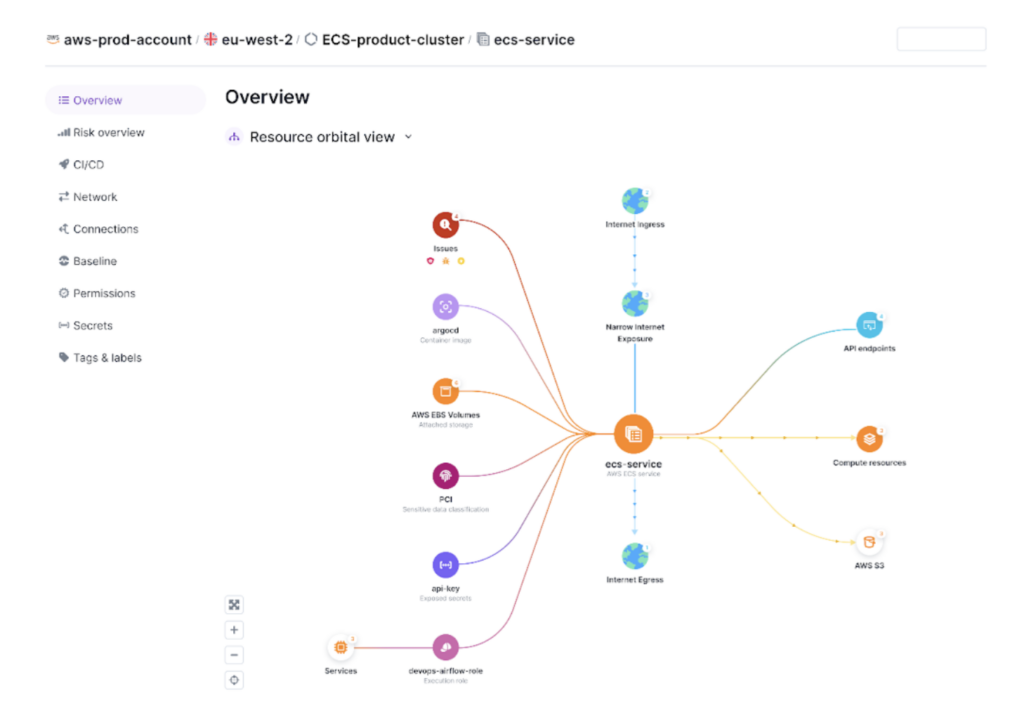
Proactively Identify Privilege Escalations
Upwind allows you to identify potential weaknesses in user permissions that attackers could exploit to elevate their access to administrative levels.
By providing in-depth findings and a strong foundation for analysis, Upwind pinpoints potential threats where user permissions pose a risk of privilege escalation. This includes identifying opportunities for “lateral movement” within your environment, where an attacker could leverage a misconfigured or overly permissive IAM policy to create and utilize a path for higher permissions.
Monitor Identity and Access Management
Upwind discovers human and machine identities across clouds to understand who has access to what, automate actions to remove stale access and achieve least privilege access across your services.
By giving organizations this deep identity context and identity risk assessment, Upwind simplifies identity management, streamlining auditing and compliance while reducing the attack surface with strengthened Cloud Identity Entitlement Management.
Upwind ensures that permissions are correctly set and that access to cloud resources is appropriately managed. Moreover, by monitoring for excessive permissions and inactive principles, organizations can enhance their security posture.
Receive Built-in Remediation Plans
Upwind provides a built-in remediation plan for every finding in the platform. When viewing a new issue, you automatically receive information about the needed remediation, taking you straight to the root cause of the detection and providing the instructions to remediate and fix the issue.
Leverage Upwind’s contextual insights, identify the root cause of security issues, and streamline your remediation process – saving your team valuable time and money.
Create Custom Workflows
Upwind’s Workflow Management enables you to create multiple streamlined workflows and ensure the right team members are receiving the most relevant alerts and tickets. It allows you to Integrate with any notification or project management system, simplify your internal workflows, and streamline your remediation process – all in one centralized location.
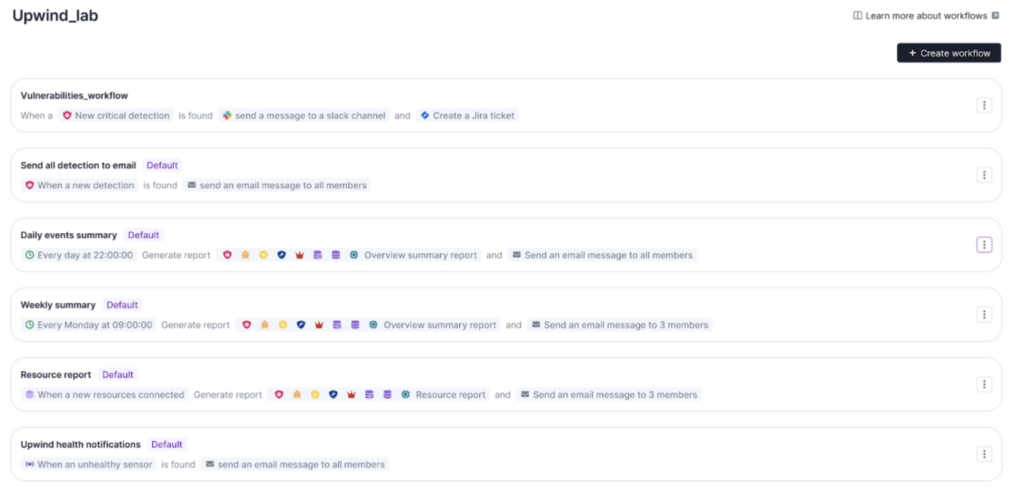
Upwind’s Next-Gen CSPM
Traditionally, security teams have relied on shift-left practices to identify potential serenity posture issues. However, this approach often misses critical context about how those configurations and the relevant workloads perform at runtime. By performing scans at runtime, our platform provides a comprehensive view of cloud security risks.
This approach allows organizations to:
- Prioritize Alerts with Precision: By looking for misconfigurations at runtime, our platform can highlight the most pressing issues. For instance, a misconfiguration that is exploitable in a runtime environment is prioritized over issues that are less likely to pose immediate threats.
- Accelerate Root Cause Analysis: When incidents occur, having access to runtime scans and CI/CD context helps teams quickly identify the source of the problem. This means less time chasing down false alerts and more time implementing effective fixes.
- Enhance Contextual Understanding: Understanding the interplay between posture findings and broader cloud security context provides teams with deeper insights into how security policies are enforced and where potential gaps may exist. This context is crucial for proactive security management.
To learn more about Upwind’s posture capabilities, visit the Upwind Documentation Center (login required) or schedule a demo.



